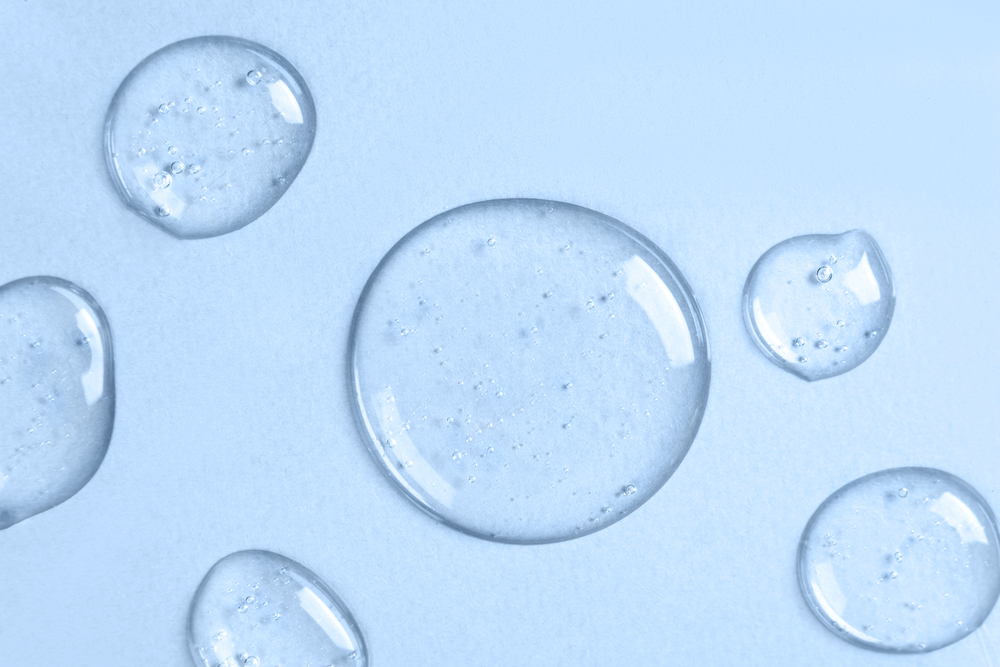In this edition of Hip & Healthy’s Beauty School series, we’re shining a spotlight on hyaluronic acid. Which, if you want younger-looking, plumper, more radiant skin, you should be adding to your skincare arsenal, stat. A hydrating hero that helps the skin retain moisture, it also strengthens and supports the skin’s barrier and it’s gentle enough for all skin types. Win-win.
But what exactly is hyaluronic acid and how should we be using it? We tapped Ridah Syed, Senior Medical Aesthetician at Skinfluencer, to find out everything you need to know. So, get ready to swot up on this must-have beauty ingredient and bag yourself an A+ when it comes to all things hyaluronic acid.
So, what exactly is hyaluronic acid?
Hyaluronic acid occurs naturally in the skin and is part of its youth-supporting matrix. The molecule can hold more than 1,000 times its weight in water! As a skincare ingredient, it’s a natural humectant, hydrating skin from the inside out. This helps to keep skin looking youthful, as well as preserving the health of the skin barrier. It also revitalises the skin’s outer surface layers, so skin appears softer, smoother, and radiantly hydrated, which helps improve the appearance of fine lines and wrinkles.
What Are the Pros and Cons of Using It?
Hyaluronic acid’s ability to bind moisture is exceptionally important when it comes to ageing. As we age, our skin loses the ability to hold onto water and retain a balanced amount of moisture. This results in loss of firmness, plumpness, and suppleness, which ultimately causes lines and wrinkles.
By using hyaluronic acid in your skincare regime, you can reduce the appearance of wrinkles as skin becomes better hydrated. It can also help skin retain a firm and youthful appearance. This is because with regular usage, it can boost moisture in the skin by up to 96%! As far as I am concerned, there is no downside to the ingredient, and everyone should be using it!
Can All Skin Types Benefit from It?
Absolutely, but it can be especially helpful for ageing and dehydrated skin types.
Hyaluronic acid is a gentle ingredient so even the most sensitive, redness-prone skin can benefit from it.
What’s the Best Way to Incorporate It into a Skincare Routine?
I like to use a medical-grade serum after cleansing and before my moisturiser, as it will have been formulated to ensure it can penetrate the skin. I like to apply the iS Clinical ‘Hydracool Serum’ twice a day, morning and evening, while my face is still damp from washing. This refreshing lightweight serum enables penetration of superior antioxidants, essential botanicals, and bio-nutrients to rejuvenate and hydrate the skin.
Also, always apply your serum prior to your moisturiser, as usually a moisturiser is an emollient that sits on top of the skin to prevent water loss, so it will not let a serum penetrate it.
What’s the biggest misconception about hyaluronic acid?
There are two. One is that all hyaluronic acids are made equal. This is not true – you need to be careful about how the product has been formulated as if it has not been manufactured correctly, then it will not be able to penetrate your skin – as needed – to ensure the benefits. Also, although it is an acid, it does not exfoliate or promote cellular turnover. This is because it is a gentle acid, with a pH between 5.0 and 8.0, which complements the skin’s natural pH, which is usually between 4.5 and 6.2.
words by Frankie Rozwadowska




















